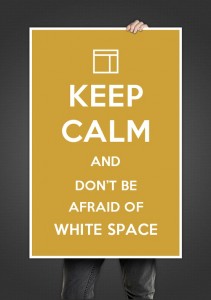So, you’re a graphic designer. But are you a “great” designer?
How do you discern between your average run-of-the-mill amateur and a truly brilliant artist?
Plenty of individuals feel that because they sit behind a computer for hours at a time fiddling around with the latest version of Photoshop or InDesign that they’ve been dubbed a “graphic designer” by the gods of All Things Design. This is just not so. Design is a specific lifestyle that can only be lived by a true artist who lives and breathes in a world of art and creativity. Not to say you must sleep with an easel at your bedside, but achieving the title of a “great graphic designer” does involves a certain dedication and power of mind.
Luckily, you do not have to be in the dark forever! I will divulge to you all of the secrets and tricks of the trade that have kept your skills and potential on an “average” plateau going nowhere fast.
Education
Learning doesn’t end after graduation. No diploma will ever be sufficient enough to make you forever, a talented designer. Studying, research and exploration – these are three things that must continually be done to keep up with the times – especially in such a diverse market. Travel, read, attend conferences or events – meet other designers! Whatever you do to build upon your current foundation of education, know that it is worth doing to achieve greatness.
Artistic Ability
Some may say there are those who are born with an innate ability to create masterpieces. Others argue that it is something that is learned – a form of artistic conditioning. Whichever it may be, it doesn’t much matter. The key is to make sure that as a graphic designer, you have a working knowledge of color, composition and typography. Whether you were born with “an eye” or have acquired it overtime, it is important to harness and encompass each of these crucial artistic elements into all of your work.
Know Your Tools
You could be the world’s greatest artistic prodigy, but if you lack the necessary expertise with the latest creative productivity tools and software, you won’t make it very far. Become familiar with the staples of graphic design: Photoshop, Illustrator, InDesign Quark, Flash, and CorelDRAW. These programs are constantly being updated and it is imperative to keep up with the newest versions. If you are not familiar with them, remember: “Practice makes perfect.” Take the time to sit down for a few hours a day and explore all of the functions each program offers. Creating a mock projects to practice with will flush out your knowledge and skills. Take a look at the tutorials that come with the software. This will save you the time of squandering to figure out how it all works so that you can quickly get to work and start creating! A class on the software is also extremely helpful and worth the expense if you are serious about growing your design career.
Know Your Industry and Market
The very first thing to understand about this industry is the production process. For instance, if you are creating a marketing brochure for a client, you MUST be aware of how the piece will be printed, produced and distributed. Without this knowledge, you may be left with an end product that is not at its best quality. The most disheartening thing to see in a designer is an obstacle that limits their creative process – and more often than not, it is a lack of knowledge in his or her respective industry.
Next, you must understand why you are designing the pieces that you are. Ask yourself the following questions while designing: What is the goal of this piece? How will it affect my client’s business? Who should this piece be speaking to? The purpose of the piece is what is most important above all else. Though it may look pretty or even unique, if it is not relaying the appropriate message to the right people than it is worth no more than the paper it is printed on. A working knowledge of business, marketing and even finances are all facets of design that not only assist you in meeting client needs, but more often than not, will put you ahead of the rest!
Enforce a Responsible and Honest Work Ethic
Care about your work! Though the majority of the time the work you are creating is for someone else, it does not mean it is not yours. Your work is a reflection of you as a designer and as a human being. Take on the responsibility of being known as the dependable designer who delivers a complete package – one that is to the best of your ability and meets all of your client’s needs. Meet your deadlines if you have them. Don’t live on the motto, “just get it done.” Work beyond your own expectations and make an effort to push the envelope. You will never evolve as an artist if you do not.
You must also be aware of the fact that design is a form of artistic communication. Though it may not always involve a voice or words, your work is meant to translate a particular message to the public. Excessiveness and trickery are seriously frowned upon. An honest message that is spoken through a smart and clean design is what our industry and market live by and rely on.
Design SMARTER!
In order to design smarter, there are a few elements that must be addressed and tweaked in your current process. The easiest way to learn is from other designers or artists. It is not uncommon for artists to use one another as inspiration or outlets to learn and grow. It is OK to borrow ideas – just make sure that you are adding your own personality and ever-improving them. Your work should never feel like someone else’s.
A major faux pas of the average graphic designer is the overuse of elements, whether it is font or unnecessary use of color and/or effects. A smart designer does not drown his or her piece, leaving little to no room for the message to be heard. A great design usually involves as little design as possible. Always remember, white space is your friend!
Let’s face it – nothing seems to be made to last the way that it used to. Our society disposes of trends daily. It is vital that any design you create should evoke a feeling of timelessness. A good design may be trendy and fashionable, but a great design is long lasting and can survive in any market or society.
Last but not least, a smart designer is a true marketing genius at heart. He or she can tap into the customer experience and foresee what they want to read and take from the particular piece before they do! Most designs are visually enticing and could very well catch the eye of your every day passer-by. But it is a successful designer that can create “an experience” that serves as a catalyst for action. This should always be the goal! Without generating this outcome, your piece has not done its job.
If you’ve been living as a self-proclaimed graphic designer – worry yourself no longer! These six elements will provide you with the framework to accelerate your learning and career. What do YOU think makes a graphic designer great? Share you thoughts with us!




Great post, thanks.
I have a problem that my design is very oldschool. I have experience with many design software tools, but many design works of mine are 90s… I want to jump into “modern” design.
Lauris, I suggest if you want to change the way you design, get a client that needs something you don’t normally do, thus forcing yourself to learn and try new things. It will be more work as it is new territory, but being paid to learn is a good way to look at it.
Amazing post!
These things are really necessary for a graphic designer to achieve his goal. Thanks for sharing the thoughts.
I have to agree with you. However, the most important thing a graphic designer has to consider is the market. It doesn’t matter how good they are, if they don’t understand what their product will be used for it probably won’t work out well. At least, it won’t work as well as it could have. So, when designing a product the first thing you should ask is, does this work in a brochure or on a label, shirt, or whatever medium, and will the client like it.
Yes, knowing the market and target audiences is crucial to successful designs. It’s a great thing to keep in mind as a graphic designer.
I think it’s interesting that you can have all of the art experience, but will not do well if you can’t use the programs. I have tried to use Photoshop once, and it was a very difficult experience. I think it’s very impressive when someone can use Photoshop to make such beautiful and creative things.
Traditional artists can certainly integrate their talent and skills into the world of graphic design. Programs such as Photoshop take a lot of time to get to know and use to your advantage. If you can get the basics down, the tools & techniques become easier with practice.
Priceless info. Thx.